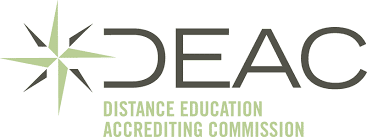Top EFL Classroom Reading Activities
Join a global community of over 200,000 TEFL teachers working throughout the world! Enrol me!
Teaching reading in an English as a Foreign Language classroom can be tricky.
You are not only asking your students to respond to the text as whole i.e. in terms of its meaning, but there is also a need to focus on the language, how it may restrict access to comprehension, or how it can be used as the basis for more learning.
As a rule of thumb, reading lessons can be divided into three sections which relate to different strategies involved in reading: before reading, during reading and after reading – or pre-reading, while-reading, and post-reading.
Here we look at a few simple activities for each of these stages which will help you make the most out of your reading lessons:
Pre-reading
What are pre-reading strategies?
Pre-reading strategies activate students’ prior knowledge on the topic and set a purpose for reading.
Pre-reading activities
- Read the first line of the text to the students. Ask them to predict the content and language they will find in the rest of the text.
- Choose a few words from the text. Give one set to half the class and the other set to the other half of the class. Each student explains their keywords to their partners. Together they then predict the story from the keywords.
- Provide visuals to act as a discussion related to the text (without the students realising they are talking about the text).
- Get the students to come up with questions related to the topic of the text. They then ask each other in groups. The questions can be anything. For example, if the text is about a football player, questions could be: How often do you play football? Is football popular in your country?
While reading
What are while-reading strategies?
While-reading strategies help students organise their ideas, focus on the important parts of a text, assess their comprehension, and generate questions.
While-reading activities
- Divide the text in half. Each student only reads half the text. They work in pairs to construct the meaning of the whole text. This can be done by simply cutting the text in half or by cutting it at random places; which method is best will depend on the text.
- Let the students come up with questions from the text which their partners must then answer.
- Take out a number of sentences of the text. While they read, the students put them back in the correct place. This can be done with words instead of sentences.
Post-reading
What are post-reading strategies?
Post-reading strategies allow students to reflect on, question, summarise and respond to the text.
Post-reading activities
- Let the students answer questions which relate the text to the students’ lives.
- The students can present a follow-up to the text – what happened next?
- The students can write a letter to the editor letter commenting on the text.
Teaching reading doesn’t need to be a complicated process. If you break it down into these three stages (pre-, during and post-reading) you should find planning and executing a lesson plan easy.
Accreditation & Quality Assurance
The TEFL Academy was the world’s first TEFL course provider to receive official recognition from government regulated awarding bodies in both the USA and UK. This means when you graduate you’ll hold a globally recognised Level 3 (120hr) Certificate or Level 5 (168hr) Diploma, meaning you can find work anywhere and apply for jobs immediately.
 United Kingdom
UK
United Kingdom
UK












